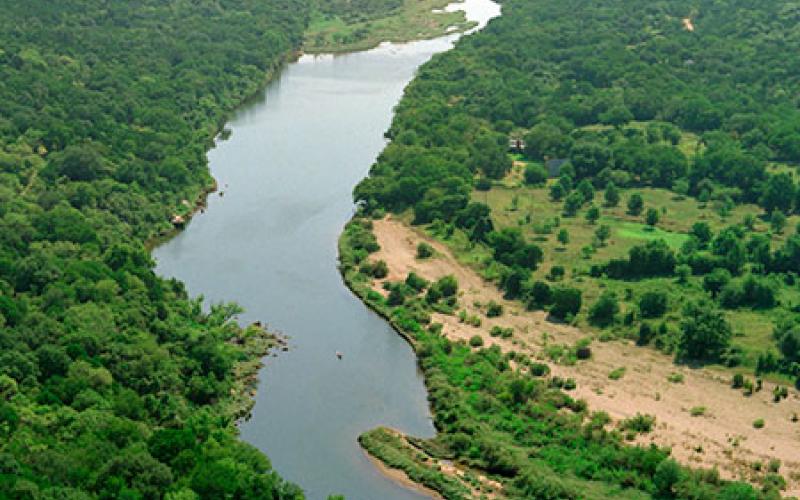A business case for ecosystem service valuation: Water in the Brazos

A business case for ecosystem service valuation: Water in the Brazos
A recent study explored how businesses might value the critical ecosystem services provided by water — and how valuations could drive decision-making.
Original Paper:
Reddy, S.M.W., et al., Finding solutions to water scarcity: Incorporating ecosystem service values into business planning at The Dow Chemical Company's Freeport, TX facility. Ecosystem Services (2015), DOI: http://dx.doi.org/10.1016/j.ecoser.2014.12.001i
Water is hidden in everything around us. It is used to manufacture the gasoline in your car, the computer in your backpack, and the phone in your pocket. Without an adequate supply of freshwater, most industry as we know it would grind to a halt. Many of the things that society takes for granted would become prohibitively expensive or altogether unavailable. Unlike in other parts of supply chains and traditional financial risks, however, business has been slow to incorporate the economic value of water into decision-making.
Using the Brazos River in Texas as a case study, a team of researchers from The Nature Conservancy, Dow Chemical, and several universities explored how business might value ecosystem services and how valuations could drive decision-making. Dow had previously completed robust water assessments for its facilities on the Brazos, but this collaborative program brought forth nature-based solutions and financial valuations for natural capital assets. Nature-based solutions are those that rely on an improvement to a natural system, such as invasive species management, to improve available river flows, and natural capital assets in this setting are the water rights owned by Dow and others.
The team began by creating high-resolution and very detailed projections of hydrology and climate including flow rates, routing, and evaporation. These projections were made for three demand and three climate scenarios. Each of the 77 industrial water rights on the river was then valued using the alternative cost method, a system that identifies economic values based on the next best alternative. The comparison was between desalination and the existing costs of direct pumping or leasing water rights.
Nature-based solutions to water scarcity were introduced through stakeholder meetings, which produced sixteen possible interventions. After narrowing these down to five options based on a ranked scoring system with the expert stakeholders, the team modeled the potential increase in water availability for each solution. Comparing this to the expected value of water rights, as modeled above, it was possible to determine ecosystem service valuations for the chosen nature-based solutions of marshland water treatment, reservoir reallocation, and land management. Marshland treatment and land management yield a combined 140,000 acre-feet per year, yet they are cost prohibitive relative to their valuation. However, the cost-benefit analysis for reservoir reallocation is positive. This solution would modify reservoir storage pools from their current use as flood control to water supply uses.
The takeaway from this work is less about the specifics of the Brazos River and Dow, but rather the forward progress in valuing freshwater supply ecosystem services. This is a niche corner of the world of ecosystem valuation, but it could lay the groundwork for future studies that further advance the relevant economic tools. The labor-intensive nature of stakeholder meetings, extensive modeling efforts, and the specificity of the approach to a prior appropriation water rights system may hold back a wider application of this technique. A possible next step in this research is to systematize some of the components, yielding a hybrid of a custom and an off-the-shelf model.
The bottom line is that companies largely make decisions based on their financial incentives, and to-date the case for investing in ecosystem services, or valuing freshwater at all, has been one of altruism. Giving corporate decision makers financial incentive to make environmentally sustainable choices is the best way to affect change. Creating a story that directly links increased investments in ecosystem services with decreased financial risks is sure to be compelling.




